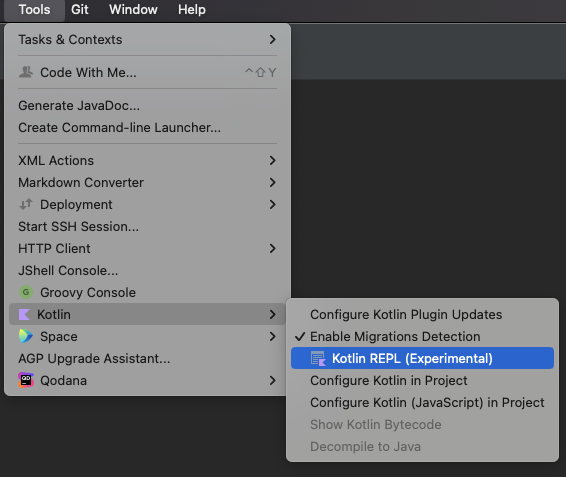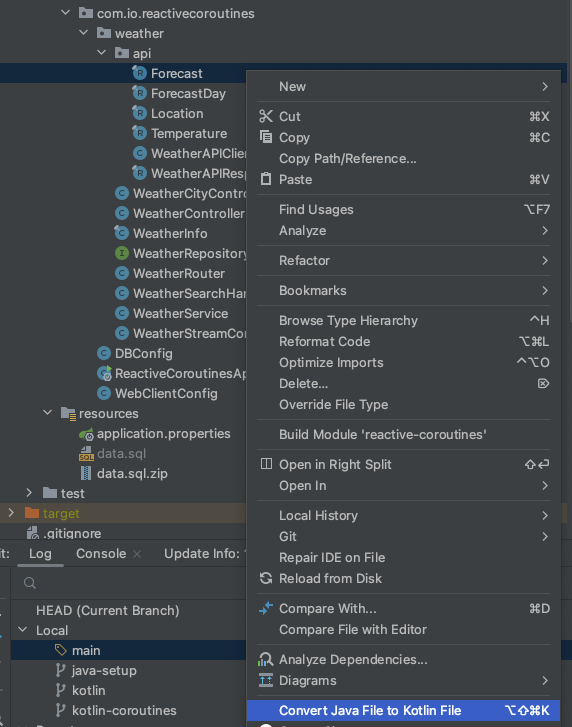- unzip resource file
data.sql.zip - use the VM flag
-XX:+AllowRedefinitionToAddDeleteMethods - set property to false the second time the application runs:
com.io.reload-db-data=false
The project contains the file scripts/Weather-info-requests.http that you can use to make api calls directly from your IDE
As a first step, we would like to migrate the project to kotlin. The project is already configured for kotlin but the files are all java.
As some of you are not familiar with kotlin, here are a few tips to help you with the syntax:
- The primitive types and their boxed versions do not exist:
intandIntegerbecome ->Intin Kotlin - The types all exist in 2 variants:
nullableandnon-nullableso the javaStringbecomes ->StringandString? - every
nullablevariable has to be accessed safely using?.instead of.: for example:a.b?.c?.d-> a is not nullable, but everything after is. It is also possible to perform null checks manually and the value will automatically be cast to non-null version. See docs - you can use
?:to conditionally access the right part when the left part isnull. You can use (but shouldn't)!!to assert something as not nullable (a!!.bwill throw NPE at Runtime if a is null) - Functions and types are written differently:
Mono<ServerResponse> foo(Bar bar) {}will become ->fun foo(bar: Bar): Mono<ServerResponse> {} - the variables can be assigned with
val(constant reference) orvar(mutable reference), you should only usevarif you can't useval - the lambdas are written differently:
(a, b) -> {}will be written{ a, b -> }in kotlin, if you don't provide a name for the parameter, the defaultitbecomes available - lambda parameters: in kotlin, if the only parameter is a lambda, then you omit the parenthesis in the function call:
collection.filter({ item -> item })will be writtencollection.filter { it } - You can chain instructions, without variables with the widely used functions
apply,also,runandlet. For example:listOf(1,3).map { it += 1 }.let { setOf(it) }.also { log.debug(it) }will return aSetand also log its content - The default collections and data structures available are not mutable, if you want their mutable version, you need to request it:
listOf(1,3)is not mutable,mutableListOf(1,3)is mutable. - What you would write as a java record should be a kotlin data class:
data class A(val a: String?, val b: Int)(be aware of thevalin the parameter) - The kotlin class and its file don't need to have the same name, similarly you can have as many classes as you want per file.
- instead of using static values, you can define
objectwhich are singletons, and usually used ascompanion objectfor a class to have its static methods.
You can find the REPL if you want to try some kotlin code:
You can use the IDE functionality to get a direct code translation java to kotlin. While the code migration works, you need to re-arrange it to make it more human-readable.

